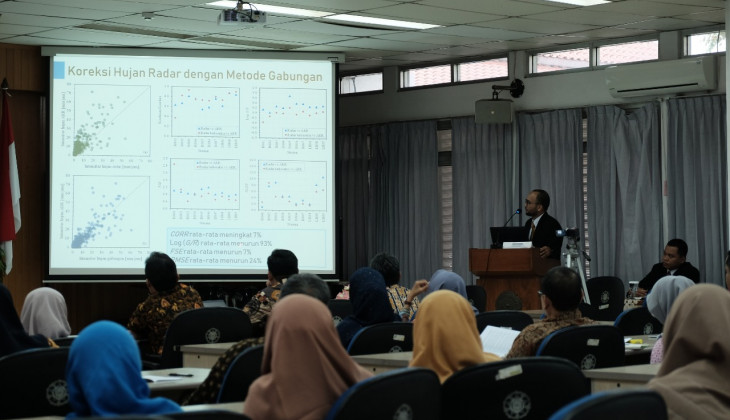UGM Civil Engineering Doctoral Program student, Roby Hambali, developed a radar rain-based short-term rain forecasting model using the High-Resolution Pixel-based QPN method using PLKOF or the HPLK model.
His research focuses on the slopes of Mount Merapi which have distinctive topographic and climatic characteristics. Short-term rain spatial distribution information through the forecasting process is needed for applications related to lava flood mitigation efforts.
“If short-term rain forecasting can be carried out with high accuracy, the results will be a very significant contribution to the development of a lava flood warning system,” he explained in a doctoral examination which took place on Thursday (16/1).
During heavy rains, the sediment deposits on Mount Merapi can be transported by surface runoff into large and rapid amounts of cold lava, causing flood disasters that can have a devastating impact on the environment in its path.
Lava flow, he explained, can occur when triggered by rain with certain criteria. He mentioned the findings of one of the studies that set a minimum threshold for the intensity of rain that triggers lava, at 9 mm / hour.
The MP Merapi X-band radar device installed through the cooperation program between the Japanese and Indonesian governments has only been used for monitoring rain data.
“For this reason, the development of a short-term rain forecasting model using the Merapi MP X-band radar data is very relevant,” he said.
The use of Multiparameter X-band radar data can provide significant benefits to short-term rainfall forecasting models. However, evaluation and correction of radar rainfall forecasts for surface rainfall must be carried out in advance given the sources of error in the estimated radar rainfall values.
“There are three main issues to be discussed, namely, the characteristics of short duration rain in the Mount Merapi area, the suitability of the radar rainfall value to surface rain, and the correct form of forecasting models for the characteristics of mountainous areas with distinctive characteristics,” said Roby.
The development of the HPLK short-term rain forecasting model, he said, had been completed well. The algorithm used for tracking rain movement with the PLKOF method shows good results, especially for small displacements.
“The short-term rain forecasting model generated from this research is very potential to be applied to applications related to lava flood warnings in the Mount Merapi area,” he said.
However, he acknowledges that some refinement steps still need to be done before the model can actually be used for practical purposes. The application of the model to other areas needs to consider various factors, including the similarity of regional characteristics and the similarity of radar rainfall data characteristics.



